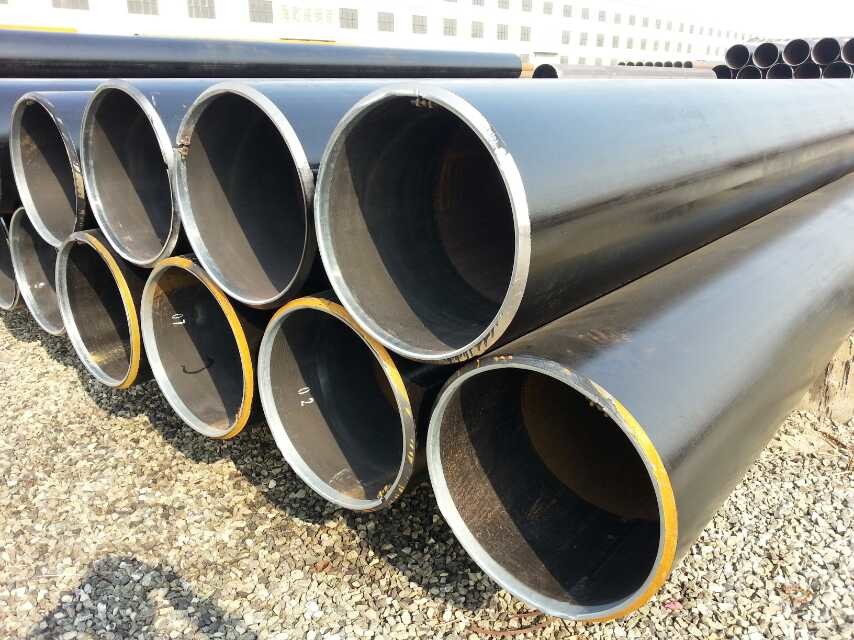Jan . 29, 2024 12:23 Back to list
Stainless Steel EFW Pipe-Guide to Steel Tube and Aluminum Tube Bending
Aluminum Tube bending is a common forming process that we as metal manufacturers practice. Additionally, it happens to be the main operation when it comes to tubing and piping. There are, however, a few factors to consider before carrying out tube bending. Here is an outline of what we are going to cover.
Submerged arc welded steel pipe
- Characteristics to consider for tube bending
- Steel tube bending
- Guideline for bending steel tubes
- Aluminum Tube bending
What’re The Properties We Need to Consider For?
Wall Thickness
During the bending of pipes and tubes, there is often a significant change in thickness. This is especially between the inner and outer walls of the bend. Some machines provide support to prevent problems with the cross-section. One common problem is the formation of wrinkles in the inner wall. Therefore, you should avoid these thickness changes if one is unable to provide support.
Yield Strength
The available machinery must be capable of carrying out the bend. The amount of force largely depends on the type of steel and the steel’s yield strength.
Bend Radius
Most suppliers provide recommendations on the achievable minimum radius. They recommend the radius that will not compromise the pipe’s integrity. In order to achieve this, expert-level attention is key.
Wall Thickness vs Bend Radius
This is a relationship between the minimum bend radius and the wall thickness. It is a significantly important correlation. This is since pipes and tubes may fail if the radius is smaller than the required wall thickness.
Material Elongation Value
Elongation refers to the difference between the yield strength and a material’s tensile strength. If there is a large difference, then a big elongation is achievable. This results in better formability features.
Steel Tube Bending
Steel is one of the most common metals in the manufacturing world. Carbon steel and stainless steel are variations at the top of the list. Clients prefer carbon steel pipes and tubes since they offer excellent strength and formability. Additionally, carbon steel is relatively cheaper. It is thus a wise choice when there are no special requirements. One specification includes having higher corrosion resistance. Another one is considering operation conditions like high pressures and temperatures.
Other key material properties are namely:
- Low melting point
- High durability
- High malleability
- Excellent heat distribution
These properties enable carbon steel pipes to have a variety of applications. Example include:
- In machinery
- Sprinklers
- Conveying low-pressure fluids
- Light gauge steel products
- Electrical conduits
On the other hand, Stainless steel is preferable in places likely to experience corrosion. Additionally, it provides excellent resistance where chemical reactions are unavoidable.
Tips for Steel Tube Bending
There is some troubleshooting when carrying out steel tube bending. Here is further insight into this.
-
Achieving a tight radius
Bends normally must achieve a tight radius. Since the outer wall at the bend is thinner, it may result in a distorted bend. To avoid this, we at Creatingway utilize a mandrel as support. This is why we do recommend ram or press bending in some scenarios. The most adequate bending technique is mandrel bending. It shares a similarity to rotary draw bending. The only addition is a mandrel that provides support to the inside of the pipe.
-
Exceeding the steels elastic limit
There some instances where the radius we need to achieve exceeds the steel’s elastic limit. It may result in deformations such as wrinkles and humps. To avoid these deformations, we recommend the use of three roll bending. One other recommendation is the use of rotary draw bending.
There is another important point to remember when bending steel pipes and tubes. Some stainless steels need 50% more power for bending that carbon steel. The machine, therefore, needs constant setting accordingly.
Aluminum Tube Bending
This process is more or less similar to what happens to the different types of steel. The type of aluminum tube bending is mainly dependent on its application. However, there are a couple of factors that come into play for you to achieve top-notch bending.
-
Aluminum Grade
The purest aluminum grades present little to no complications when bending them. These types of aluminum pipes are soft hence easy to bend. Most importantly they have excellent workability and ductility. Compromising their integrity during the bending process does not pose an issue. However, there are aluminum alloys with excellent properties. These properties make them excellent bending options for more specific applications.
-
Fixing Defects
Aluminum tube bending faces similar problems as stainless and carbon steel bending. The recommendations for solving the problems are thus the same. The defects may prove to be more difficult to prevent in the case of thin-walled aluminum tubes. If flattening or wrinkles appear, we recommend sand packing to resolve it. This entails filling the tubes with sand or any other non-compressible materials. Alternatively, we then cap the ends before subjecting the part to bending. If you have any inquiries regarding steel or aluminum bending, simply contact us.
-
High Quality Mild Steel Pipe Manufacturers in China for Exporting Premium Industrial Solutions
NewsAug.01,2024
-
Exploring Key Characteristics of Wholesale API Steel Pipes for Your Business Needs
NewsAug.01,2024
-
Current Wholesale Prices for ERW Steel Pipes in the Market Right Now
NewsAug.01,2024
-
Exploring the Diverse Applications and Benefits of China Round Steel Pipes in Construction and Industry
NewsAug.01,2024
-
Top Quality API 5L ERW Steel Pipe Manufacturer Offering Reliable and Durable Solutions for Your Needs
NewsAug.01,2024
-
Reliable Supplier of Premium Quality Concrete Pipes for Durable Construction Projects
NewsAug.01,2024
